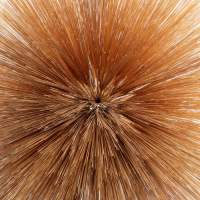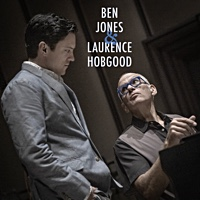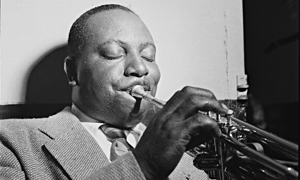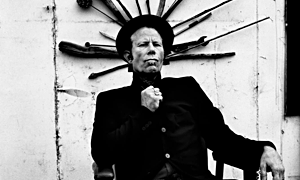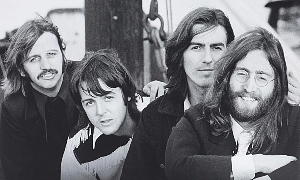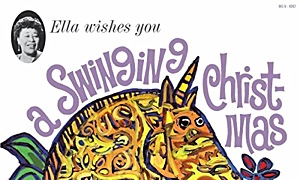Home » Jazz Articles » Book Review » Listening: Music, Movement, Mind
Listening: Music, Movement, Mind
[My] goal is to invite people to embark on an existential journey of the imagination.
—Nik Bärtsch
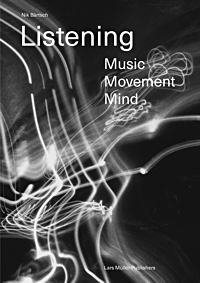 Listening: Music, Movement, Mind
Listening: Music, Movement, Mind Nik Bärtsch
352 Pages
ISBN: 9783037786703
Lars Müller Publishers
2021
If Swiss pianist Nik Bärtsch, best known as the mastermind—or perhaps, more fittingly, the beginnermind—behind "Ronin," an ever-evolving interpretive organism for his modular compositions, has long seemed an enigmatic figure, then Listening: Music, Movement, Mind may well serve as the missing link between the man and the mystery. Beneath the disarming subtitle "A Useless Guide for Everything" lies a work that is anything but useless: a profoundly lucid meditation that balances autobiography, aesthetic philosophy, and lived practice. Created in collaboration with his wife, shiatsu practitioner Andrea Pfisterer, and handsomely published by Lars Müller, it is a book of quiet revelations, an art of living disguised as a manual for sound.
While one might assume from its title that Listening is a treatise on the act of auditory perception, Bärtsch nuances this expectation from the start. "This book wants to listen to you," he writes in his Preface. The inversion is crucial: rather than instructing us how to listen, Bärtsch invites us into a dialogue of mutual perception. Just as great literature holds a mirror to the soul, this book holds a microphone to the reader's heart, searching for rhythmic responses to ancient questions that have haunted humankind since the first branch was broken and, like the ape-thrown bone in the opening sequence of 2001: A Space Odyssey, launched skyward as an instrument of consciousness. The takeaway, if there is one, is that listening is not merely a musician's craft but an existential mode, a discipline of awareness. For Bärtsch, it is "an attitude, an interactive quality, a partner-oriented strategy of action."
This strategy, however, is not without its tensions. Every creative act occurs within a fragile ecology of relationships: received or rejected, cherished or feared. What may seem contradictory on the surface often reveals a deeper consonance beneath. The performer's task, like that of the thinker, lies in navigating this paradox between composition and improvisation without ever losing sight of the silence from which both are born and to which both return.
Listening now becomes a metaphor for being itself. What does it mean to "listen" to that which cannot be heard? Perhaps it is to attend to what has not yet taken form, to the thought before the action. Bärtsch's assertion that it "needs a silent mind and mouth" becomes, therefore, not an instruction but a koan. How does one quiet the mind when the mind itself is not a noisy thing? Conversely, how can we hear our own thoughts if no sound accompanies them? And what of the inner voice with which you read these words? Is it real, or merely a ghost of cognition?
Bärtsch grounds his reflections in aikido, where the student's shout (known in Japanese as "kiai") renders intention audible. The vocal apparatus here is not ornamental but generative, binding thought and action into a single current. (It's worth noting that kiai can also be silent.) In this way, listening is never passive; it is an embodied readiness that allows action to emerge naturally, without force.
To trace the origin of this aesthetic, Bärtsch returns to his childhood and to the clear-lined world of Belgian comic artist Hergé (of Tintin fame). Inspired by Japanese masters like Hiroshige and Hokusai, this approach privileges the economy of line: the fewer of them there are, the more each matters. In a thicket, error hides easily, whereas in a single stroke, every gesture becomes decisive. This same clarity informs his music, where reduction is not deprivation but revelation. It recalls the recalibrations of Morton Feldman and John Cage, tracing restraint as a path to wholeness.
In all of Bärtsch's configurations, from solo to ensemble, the goal is not to shatter convention but to evolve it. "The avant-garde crowbar that violently forces new developments can stay in the toolbox," he writes. "Evolution happens naturally." And indeed, when art aligns itself with the flow of becoming rather than the violence of rupture, it begins to resonate with what Pythagoras once called the harmony of the spheres, a cosmic order accessible, for a moment, to human ears.
At the heart of this lies a paradox of collectivity. A band, like an ecosystem, is sustained by both cooperation and individuality. The very term "band" recalls its military origins of discipline, coordination, and survival through unity, while for Bärtsch, the ensemble enacts a pacifist inversion of this idea: a "golden cage" (as his drummer Kaspar Rast once phrased it) of freedom bounded by rhythm. Within such discipline lies liberation, for it is only through repetition, pulse, and structure that one learns to transcend the self. Thus, his Ronin project is a self-organizing organism in which the self comes to life through mutual dependence.
Yet this harmony is fragile. Every performance, no matter how cohesive, contains the seeds of disintegration in the forms of ego, fatigue, and the entropy of time. Hence Bärtsch's advice: "Curse, blame and lament in the privacy of your kitchen table at home, but not in the band and certainly not in public. Professional discipline gives everyone strength." It is a musician's version of stoicism: the art of internalizing turbulence so that creation may remain undisturbed.
In the end, what is the purpose of collective art? Is it centrifugal or centripetal, drawing inward or radiating outward? Bärtsch offers an answer both mystical and pragmatic: "[My] goal is to invite people to embark on an existential journey of the imagination." Creation, then, is not a path toward mastery but toward unlearning, toward the rediscovery of innocence. Pfisterer echoes this in her reflections on aikido as a practice of transmutation from survival instinct to creative instinct, from the defensive to the generative.
This logic extends into the book's very design. Its pages form a visual polyphony of paintings, backstage photographs, performance posters, and album art, all of which act as extensions of the written voice. Each image, each line of text, feels like a crack in the same façade. Even the abstract cover art by Martin Möll gestures outward, a visualized breath. Likewise, when Bärtsch muses on his album Llyrìa, named for a rare jellyfish species, we are reminded of just how many millions of undiscovered species there are still swimming in the depths of the ocean. The implication is luminous: how many unheard patterns, unseen forms, and unimagined rhythms lie dormant within us?
Listening is not merely the act of perceiving sound but of awakening to the infinite potential of perception itself. It is solitude turned inside out, a private act that becomes collective through resonance. As Bärtsch writes, "In the musical language of our community, the rhythm has the function of the melody." To play alone is still to play with others; to listen deeply is to belong.
And so, in Bärtsch's world, composition and improvisation dissolve, one into the other, each the ebb of the other's flow. Time and space cease to be opposites but become two articulations of the same silence. What remains, in the end, is the quiet pulse of being. It is the rhythm of life itself, listening to us as we relearn, ever so slowly, what it feels like to be heard.
Tags
PREVIOUS / NEXT
Support All About Jazz
 All About Jazz has been a pillar of jazz since 1995, championing it as an art form and, more importantly, supporting the musicians who make it. Our enduring commitment has made "AAJ" one of the most culturally important websites of its kind, read by hundreds of thousands of fans, musicians and industry figures every month.
All About Jazz has been a pillar of jazz since 1995, championing it as an art form and, more importantly, supporting the musicians who make it. Our enduring commitment has made "AAJ" one of the most culturally important websites of its kind, read by hundreds of thousands of fans, musicians and industry figures every month.




